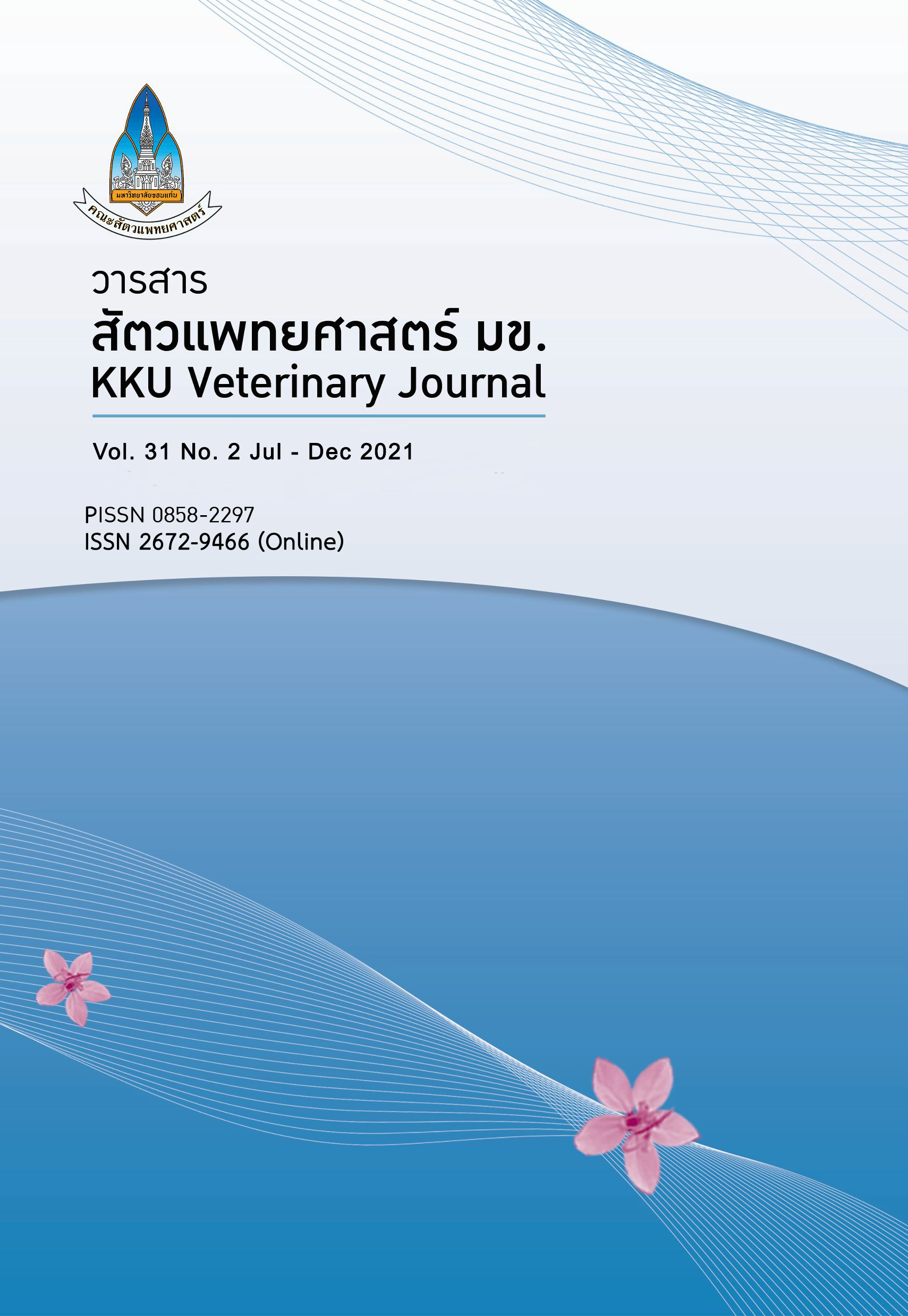The study of chemical composition, physical characteristic and cytotoxicity of Thai bentonite The study of chemical composition, physical characteristic and cytotoxicity of Thai bentonite
Main Article Content
Abstract
Objectives: The aims of this study were to investigate the structurally chemical and physical properties, and to evaluate primary cytotoxicity of Thai bentonite on Vero cell line.
Materials and Methods: The structure of Thai bentonite was investigated by measuring pH, cation exchange capacity (CEC), specific surface area, swelling index, crystal structure, functional group, surface morphology and elemental composition, while the cytotoxicity of Thai bentonite was conducted by MTT assay on Vero cell line.
Results: The results revealed that Thai bentonite had chemical and physical properties as reported of another bentonite, and it had high adsorption property because of high CEC, specific surface area and swelling index. In addition, it had no contamination of harmful element. Thai bentonite showed the low cytotoxicity level on Vero cell line as presenting the half-maximal inhibitory concentration at 66, 20 and 15 mg/L after exposure at 24, 48 and 72 h, respectively.
Conclusion: All results indicated that Thai bentonite had the great adsorption property with safe application in organism, and it also contained supplementarily necessary elements for animals.
Article Details

This work is licensed under a Creative Commons Attribution-NonCommercial-NoDerivatives 4.0 International License.
References
Akpomie KG, Dawodu FA, 2015. Potential of a low-cost bentonite for heavy metal abstraction from binary component system. BJBAS 4, 1-13.
Andrunik M, Bajda T, 2019. Modification of bentonite with cationic and nonionic surfactants: Structural and textural features. Materials (Basel) 12.
Baek M, Lee JA, Choi SJ, 2012. Toxicological effects of a cationic clay, montmorillonite in vitro and in vivo. Mol Cell Toxicol 8, 95-101.
Bertagnolli C, Silva MGCd, 2012. Characterization of brazilian bentonite organoclays as sorbents of petroleum-derived fuels. Materials Research 15, 253-259.
Changsupun A, 2005. Aflatoxin in agricultural product. Biological science project, Department of science service, Ministry of science and technology, Thailand.
Gonçalves R, Kovalsky P, 2015. Mycotoxins and their economic impact on aquaculture. [cited 2021 Oct 15]. Available from: http://www.biomin.net
Kaufhold S, Dohrmann R, Koch D, Houben G, 2008. The pH of aqueous bentonite suspensions. Clays Clay Miner 56, 338-343.
Land Development Department, 2010. Soil analysis manual. [cited 2021 Oct 15]. Available from: https://www.ldd.go.th
Latifi N, Vahedifard F, Ghazanfari EA, Rashid AS, 2018. Sustainable usage of calcium carbide residue for stabilization of clays. J Mater Civ Eng 30, 04018099.
Lordan S, Kennedy JE, Higginbotham CL, 2011. Cytotoxic effects induced by unmodified and organically modified nanoclays in the human hepatic HepG2 cell line. J Appl Toxicol 31, 27-35.
Nones J, Nones J, Riella HG, Kuhnen NC, Trentin A, 2015. Bentonite protects neural crest stem cells from death caused by aflatoxin B1. Appl Clay Sci 104, 119-127.
Nones J, Solhaug A, Eriksen GS, Macuvele DLP, Poli A, Soares C, Trentin AG, Riella HG, Nones J, 2017. Bentonite modified with zinc enhances aflatoxin B1 adsorption and increase survival of fibroblasts (3T3) and epithelial colorectal adenocarcinoma cells (Caco-2). J Hazard Mater 337, 80-89.
Osman AF, M Fitri TF, Rakibuddin M, Hashim F, Tuan Johari SAT, Ananthakrishnan R, Ramli R, 2017. Pre-dispersed organo-montmorillonite (organo-MMT) nanofiller: Morphology, cytocompatibility and impact on flexibility, toughness and biostability of biomedical ethyl vinyl acetate (EVA) copolymer. Mater Sci Eng C Mater Biol Appl 74, 194-206.
Pandey P, De N, 2018. Surfactant-induced changes in physicochemical characters of bentonite clay. IJPAC 15(4), 1-11.
Park J-H, Shin H-J, Kim MH, Kim J-S, Kang N, Lee J-Y, Kim K-T, Lee JI, Kim D-D, 2016. Application of montmorillonite in bentonite as a pharmaceutical excipient in drug delivery systems. Int J Pharm Investig 46, 363-375.
Poapolathep A, 2019. Mycotoxin: Danger in food. [cited 2021 Oct 15]. Available from: https://thaimycotoxin.org
Rosa CA, Miazzo R, Magnoli C, Salvano M, Chiacchiera SM, Ferrero S, Saenz M, Carvalho EC, Dalcero A, 2001. Evaluation of the efficacy of bentonite from the south of Argentina to ameliorate the toxic effects of aflatoxin in broilers. Poult Sci 80, 139-144.
Sompech S, 2008. Preparation of polymer-nanoclay composite for use as sealing material in proton exchange membrane fuelcell [Master Thesis of Science in Materials Science]. Chiang Mai, Faculty of Science, Chiang Mai University.
Suklert S, 2015. How sodium bentonite effects to plant. [cited 2021 Oct 15]. Available from: http://www.onep.go.th
Suttanan R, Piyamongkala K, 2011. Kinetic and thermodynamic adsorption of methylene blue by modified rice husk. King Mongkut Univ Tehnol North Bangk Inter J Appl Sci Techol 21(2), 339-340.
Tengjaroenkul B, Tengjaroenkul U, Pimpukdee K, 2006. Adsorption study for the detoxification of aflatoxin B1 by using the different clays minerals in Thailand. Mycotoxins 57(Supplement), 240-244.
Thai Environmental Engineers Association, 2016. Bentonite for engineering and environment. [cited 2021 Oct 15]. Available from: https://www.eeat.or.th
Trckova M, Matlova L, Dvorska L, Pavlik I, 2004. Kaolin, bentonite, and zeolites as feed supplements for animals: health advantages and risks. Vet Med (Praha) 49(10), 389-399.
Uddin MK, 2017. A review on the adsorption of heavy metals by clay minerals, with special focus on the past decade. Chem Eng J 308, 438-462.
Yukselen Y, Kaya A, 2008. Suitability of the methylene blue test for surface area, cation exchange capacity and swell potential determination of clayey soils. Eng Geol 102, 38-45.
Zhang M, Lu Y, Li X, Chen Q, Lu L, Xing M, Zou H, He J, 2010. Studying the cytotoxicity and oxidative stress induced by two kinds of bentonite particles on human B lymphoblast cells in vitro. Chem Biol Interact 183, 390-6.


